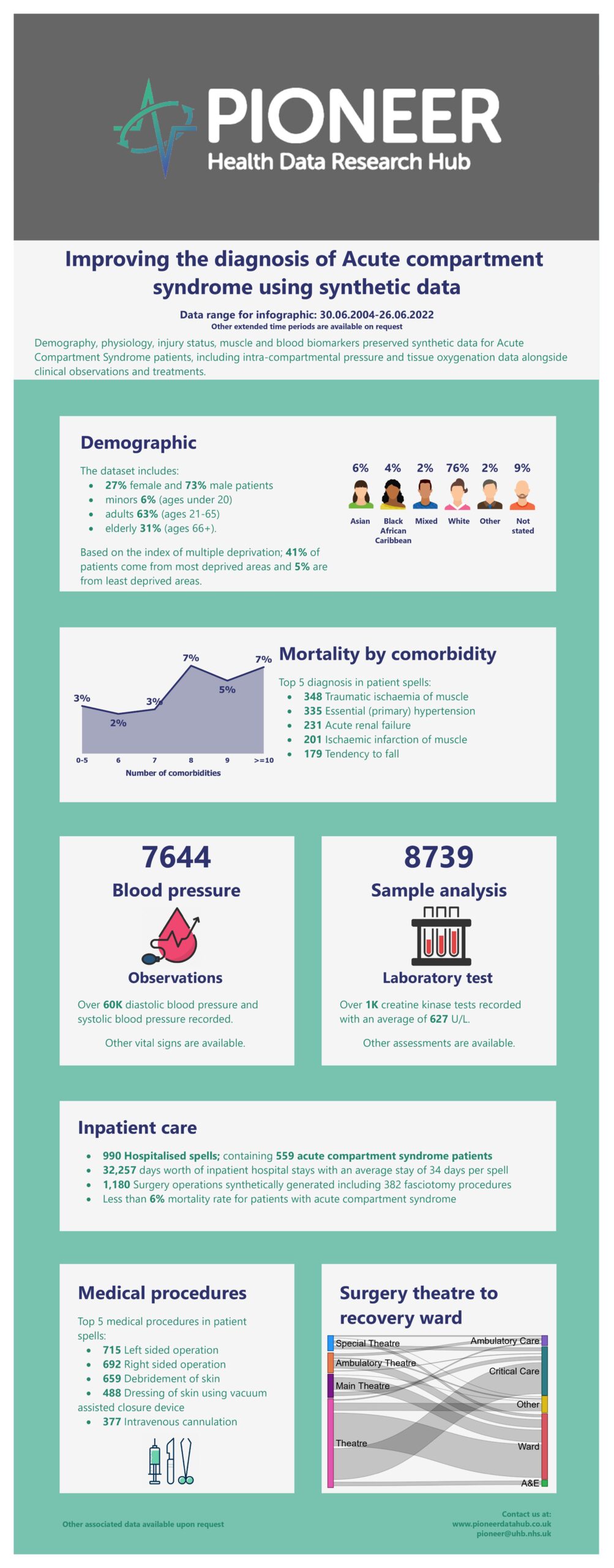- Introduction
- Data Coverage
- Further Details
- Request Access
Acute compartment syndrome (ACS) is an emergency orthopaedic condition wherein a rapid rise in compartmental pressure compromises blood perfusion to the tissues leading to ischaemia and muscle necrosis. This serious condition is often misdiagnosed or associated with significant diagnostic delay and can lead to limb amputations and death. The most common causes of ACS are high impact trauma, especially fractures of the lower limbs which account for 40% of ACS cases. In the infographic below, highly granular synthetic data of over 900 patients with ACS is shown to provide the key parameters to support critical research into this condition. 

Geography
The West Midlands (WM) has a population of 5.9 million & includes a diverse ethnic & socio-economic mix (42% non-white within Birmingham).
EHR
UHB is one of the largest NHS Trusts in England, providing direct acute services & specialist care across four hospital sites, with 2.2 million patient episodes per year, 2750 beds & an expanded 250 ITU bed capacity during COVID. UHB runs a fully electronic healthcare record (EHR) (PICS; Birmingham Systems), a shared primary & secondary care record (Your Care Connected) & a patient portal, “My Health”.
Scope Enabling data-driven research and machine learning models towards improving the diagnosis of Acute compartment syndrome. Longitudinal & individually linked, so that the preceding & subsequent health journey can be mapped & healthcare utilisation prior to & after admission understood. The dataset includes highly granular patient demographics, physiological parameters, muscle biomarkers, blood biomarkers and co-morbidities taken from ICD-10 & SNOMED-CT codes. Serial, structured data pertaining to process of care (timings and admissions), presenting complaint, lab analysis results (eGFR, troponin, CRP, INR, ABG glucose), systolic and diastolic blood pressures, procedures and surgery details. Available Supplementary Data ACS cohort, matched controls, ambulance, OMOP data. Available Supplementary Support Analytics, model build, validation & refinement, A.I., Data partner support for ETL (extract, transform & load) process, clinical expertise, patient & end-user access, purchaser access, regulatory requirements, data-driven trials, “fast screen” services.


